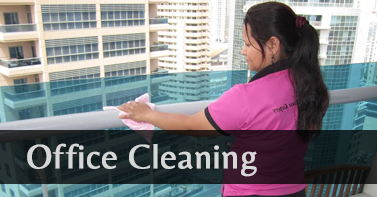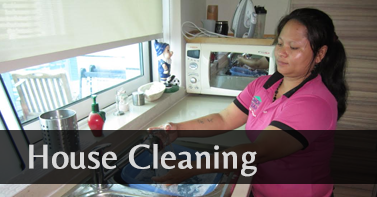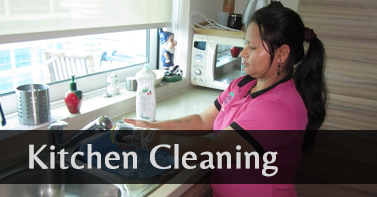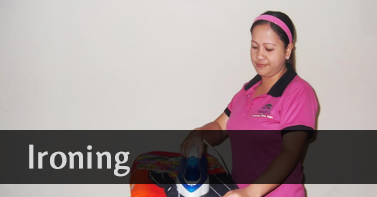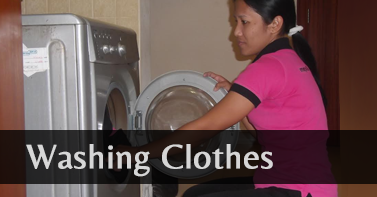The house cleaning in the modern world is not only a broom, mop, and bucket anymore. With the fast development of cleaning technologies, professional cleaning gained more speed, intelligence, and efficiency. Be it a Home Cleaning Agency, a Maid Company in Dubai or people with Housekeeping Services Dubai, modern technology is revolutionizing the system of ensuring cleanliness and hygiene.
We shall discuss some of the recent cleaning innovations that are transforming the cleaning business in Dubai.
UV-C Germ Killer – Future Advanced Disinfection.
One of the most recent devices in the house cleaning is UV-C disinfection. Though this technology is not new at all (it had been present decades ago), it started gaining popularity following the pandemic.
How it works:
- UV-C rays kill organisms, viruses and bacteria that are harmful.
- It assists in cleaning hard to touch such as doorknobs, kitchen counters and wash rooms.
- It also minimizes the use of harsh chemicals which encourages a clean and safe cleaning product.
Benefits:
- Eliminates up to 99% of germs.
- Provides a healthier and cleaner home.
- Families with children or pets or allergy prone members will find it ideal.
Deep Cleaning is the other type of service offered by Professional Home Cleaning Agencies in Dubai, whereby UV-C sanitization is now included in the package to achieve high standards of hygiene.
Robot Cleaners and Drones – Smart Cleaning in the Future.
There is automation in all areas of our lives and house cleaning is not an exception. Maid companies in Dubai currently are implementing the robot vacuum cleaners, floor polishers and even drones in bigger houses or business premises.
Why they’re effective:
- Robots sweep large floors quicker and more regularly.
- Drones are able to spray or spray cleaning agents in inaccessible places.
- They lower the human contact with germs and lessen the fatigue to the cleaners.
Key advantages:
- Energy saving and time saving.
- Monitoring and control remotely possible.
- Does not substitute human cleaners but complements them.
These machines are common to Professional Maids in Dubai so that even the smallest corners of the house are clean.
Antimicrobial Coatings – Antimicrobial Protection in the Long Run.
Antimicrobial coating of surfaces is another innovation in the house cleaning industry. Such coating inhibits the proliferation of bacteria, viruses and fungi on surfaces that are most frequently touched.
How it works:
- Stimulated by exposure to light (natural or artificial).
- Produces free radicals that destroy pathogenic factors.
- Latent works last up to several months following application.
Best used for:
- Light switches, door handles, light switches, handrails, and kitchen counters.
- Places which are likely to be often used or hard to wash are often forsaken.
This is the approach that is increasingly being adopted by Housekeeping Services in Dubai both in offices and at home to ensure a long term cleanliness.
Cleaning of Artificial Intelligence (AI) – Smarter, Not Harder.
Technology The use of Artificial Intelligence (AI) is currently integrated into the house cleaning process. It is applied to gather cleaning information, route optimization, and cleaning Efficiency.
What AI does in cleaning:
- Records the time spent cleaning up specific acreages.
- Checks levels of cleanliness and staff performance.
- Helps cleaning companies enhance their scheduling and customer satisfaction.
Benefits for Homeowners:
- The quicker service and the quality.
- Greater visibility of what is being cleaned and when it is being cleaned.
- Individual cleaning plans calculated on data.
Major Home cleaning Agencies in Dubai apply AI-based systems to make sure that each service is up to the expectations of clients and the standards of their hygiene.
Eco-Friendly cleaning product- clean and safe to the planet.
Dubai has modern maid companies with their focus on sustainability. They utilize non-toxic biodegradable cleaning products which safeguard your health as well as the environment.
Why go eco-friendly:
- Minimizes indoor air pollution.
- Family-friendly, pet and allergy free.
- Sponsors the green initiatives in Dubai towards sustainable living.
In the selection of Maids in Dubai, it is always important to create a question on whether the Maids use eco-friendly cleaning agents to ensure that your home is healthy.
Technology Advantages in House Cleaning.
- Saves time and labor costs.
- Provides more profound and coherent findings.
- Less use of chemicals and environmental effects.
- Improves hygiene and safety of homeowners.
- Allows the smarter scheduling and custom cleaning schedules.
Frequently asked questions (FAQs).
What is the benefit of using technology to clean the house?
The latest cleaning devices such as UV disinfection, robot vacuum cleaners, and artificial intelligence provide faster, deeper and more uniform cleaning, thus making the home safer and healthier.
How effective are robotic cleaners compared to the traditional maids?
Not necessarily. Robots are efficient in repetitive duties and the Maids in Dubai offers thorough and human-centered cleaning, the most effective is a combination of the two.
Is UV-C safe when used in the house?
Yes, UV-C disinfection is safe and efficient when administered by professionals of a Home Cleaning Agency and it is not harmful when it is done properly and does not involve the use of harmful chemicals.
What are antimicrobial coatings and whether they are effective at all?
Yes. These finishes can be used to coat high-traffic surfaces to keep bacteria and viruses at bay by decomposing harmful pathogens with the help of light activated reactions.
Why would I want to employ a professional Maid Company Dubai to clean?
A professional Maid Company in Dubai relies on the best tools, environmentally friendly products, and trained workers to provide a consistency of its outcomes and ensure safety and hygiene.
Does Housekeeping Services Dubai apply eco-friendly cleaning?
Yes. Most of the leading Housekeeping Services in Dubai pay an interest in green cleaning whereby non-toxic and biodegradable materials are employed.
What are the advantages of recruiting a tech-driven Home Cleaning Agency in Dubai?
You will only get quicker service, better hygienic conditions, flexibility in timing, and quality stable outcomes all of which are fuelled by the recent technology in the house cleaning industry.
Conclusion
The future of house cleaning is in technology, innovation, and environmental-friendly solutions. Since UV disinfection to robotic cleaners and antimicrobial paint, the cleaning industry has been changing to make the homes cleaner, safer and more sustainable. It is a matter of choice between a Home Cleaning Agency, Maid Company Dubai, or Housekeeping Services Dubai, but at any rate, it is important that you hire people who will accept the latest cleaning technology to keep your home tidy, healthy, and prepared to the next day.

